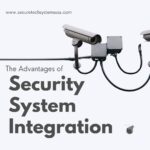The explosion of IoT-connected devices is creating an unprecedented flood of data. According to Statista, by 2025, over 30.9 billion IoT devices will be active globally. Another report by IDC states that IoT-generated data will reach 79.4 zettabytes by the same year. Managing this scale of data effectively is now a major challenge for businesses investing in IoT Dashboard Development Services.
An IoT dashboard is designed to present real-time data from sensors and devices in a usable format. However, when data grows beyond manageable limits, dashboards become cluttered and ineffective. This article explores technical strategies to handle data overload in IoT dashboards, ensuring clarity, speed, and decision-making efficiency.
Understand the Root Causes of Data Overload
Data overload happens when the dashboard receives more data than it can process, store, or display effectively. Common causes include:
- Too many connected devices
- Unfiltered raw data streaming continuously
- Inadequate data architecture
- Lack of data prioritization
Understanding these factors is essential before applying any solution.
1. Use Data Aggregation Techniques
One effective method to manage data volume is aggregation. This reduces the number of data points without losing key insights.
Aggregation techniques include:
- Time-based aggregation: Summarize readings over minutes, hours, or days.
- Statistical aggregation: Use metrics like mean, median, and mode.
- Hierarchical aggregation: Roll up device-level data to regional or system levels.
Example: A smart grid monitoring 10,000 sensors can reduce 60 readings per minute per sensor to hourly averages, decreasing dashboard load.
2. Apply Edge Computing for Preprocessing
Sending all raw data to a central dashboard can cause bottlenecks. Edge computing solves this by preprocessing data at or near the data source.
Benefits:
- Filters redundant data
- Reduces bandwidth use
- Improves response time
Real-world case: A manufacturing plant deployed edge devices to preprocess vibration sensor data. Only anomaly scores reached the central dashboard, cutting data traffic by 85%.
3. Implement Smart Data Filtering
Filtering helps the dashboard focus only on relevant data.
Smart filtering techniques include:
- Threshold-based filtering: Show data only when it exceeds or falls below limits.
- Event-driven triggers: Send data only during specified events (e.g., device failure).
- User-role-based views: Display only relevant information to each user type.
Example: Maintenance staff may only need to see fault alerts, while supervisors access productivity trends.
4. Use Visual Hierarchy and Drill-Down Interfaces
Visual overload can be as problematic as data overload. A good UI structure reduces perceived complexity.
Best practices:
- Highlight critical metrics with larger fonts or contrasting colors
- Use collapsible sections for less critical data
- Enable drill-down charts for exploring details on demand
Example: A smart city dashboard shows traffic congestion levels by color. Clicking a hotspot opens specific road sensor data.
5. Enable Customizable Dashboards
Fixed dashboards serve a broad audience poorly. Customizable views help users filter and personalize data.
Customization features should include:
- Widget selection
- Data source toggling
- Time range adjustment
Real-world usage: Energy companies allow users to monitor energy use by appliance, building, or day using custom dashboard widgets.
6. Use Time-Series Databases for Performance
Traditional relational databases struggle with high-velocity IoT data. Time-series databases (TSDBs) are optimized for this scenario.
TSDB benefits:
- Efficient handling of time-stamped data
- Faster querying over time ranges
- Better compression rates
Popular TSDBs: InfluxDB, TimescaleDB, Prometheus
Example Table: Performance Comparison
|
Database Type |
Query Latency (ms) |
Compression Ratio |
|
Relational (MySQL) |
850 |
1.2x |
|
Time-Series (InfluxDB) |
120 |
4.5x |
7. Use Anomaly Detection to Prioritize Data
Not all data points are equal. Anomaly detection helps highlight unusual patterns automatically.
Methods:
- Machine learning algorithms
- Rule-based systems
Benefits:
- Brings focus to critical insights
- Reduces noise from normal patterns
Example: A logistics company used anomaly detection to alert managers about unusual fuel usage, identifying theft within two hours.
8. Prioritize Data Storage Strategies
Historical data helps trend analysis, but not all data needs long-term storage.
Best practices:
- Store raw data short term, processed data long term
- Archive rarely accessed data
- Use tiered storage (hot, warm, cold)
Example: An industrial firm keeps 30 days of sensor logs active, then archives the rest to low-cost cloud storage.
9. Integrate AI-Based Summarization
AI models can analyze large data sets and generate summaries.
Use cases:
- Daily operational summaries
- Health status reports
- Predictive maintenance suggestions
Real-world case: A water treatment facility uses AI summaries to highlight unusual chemical fluctuations, guiding operator actions daily.
10. Audit and Refactor Periodically
As IoT systems evolve, dashboards must adapt. Periodic audits help maintain relevance and performance.
Audit checklist:
- Remove obsolete data sources
- Retire unused widgets
- Tune data update frequencies
Example: A telecom company reduced dashboard clutter by 40% after auditing outdated device feeds and legacy charts.
Conclusion
IoT dashboards are critical tools for managing complex connected ecosystems. However, without proper control, data overload can reduce their effectiveness. Techniques such as aggregation, edge processing, anomaly detection, and customization offer effective relief.
Investing in expert IoT Dashboard Development Services helps organizations apply these strategies effectively. With tailored architecture, scalable databases, and thoughtful user interfaces, businesses can transform raw IoT data into actionable intelligence—without the overload.
Frequently Asked Questions (FAQs)
1: What causes data overload in IoT dashboards?
Data overload in IoT dashboards often results from high-frequency data streams, numerous connected devices, and insufficient data management strategies. When raw sensor data is sent continuously without filtering, aggregation, or preprocessing, dashboards struggle to process and visualize it effectively. This leads to slow performance, visual clutter, and difficulty identifying actionable insights. Implementing edge computing, smart filtering, and time-series databases can significantly reduce this overload.
2: How can edge computing help reduce data load on IoT dashboards?
Edge computing allows data to be processed closer to the source—on IoT devices or gateways—before it’s sent to the central dashboard. This minimizes the volume of raw data transmitted over networks and ensures only critical or summarized information is visualized. For example, instead of transmitting every vibration reading, an edge device can send alerts only when anomalies are detected, reducing data volume by up to 85%.
3: What types of data aggregation techniques improve dashboard performance?
Effective data aggregation techniques include:
- Time-based aggregation: Consolidates data into hourly or daily summaries.
- Statistical aggregation: Uses mean, median, max, or min values to represent data trends.
- Hierarchical aggregation: Rolls up device-level metrics to higher levels (e.g., region, building, or department).
These techniques help simplify complex data sets and improve both visualization clarity and dashboard speed.
4: How do time-series databases (TSDBs) benefit IoT dashboards?
TSDBs like InfluxDB and TimescaleDB are optimized for storing, querying, and compressing time-stamped data. They outperform traditional relational databases when handling high-velocity sensor data. TSDBs offer fast querying over time ranges, better compression rates, and efficient handling of millions of records. This results in improved dashboard responsiveness, especially for real-time IoT applications.
5: Can IoT dashboards be customized to reduce visual overload for different users?
Yes, customizable dashboards are essential for reducing visual and cognitive overload. Role-based access and personalization features allow users to view only the data relevant to their responsibilities. For example, maintenance teams can focus on alerts and faults, while executives view KPIs and trend summaries. Custom widgets, time range selectors, and layout configurations ensure a focused and efficient user experience.
- How to Handle Data Overload in IoT Dashboards | Boost Clarity & Performance
- Struggling with IoT dashboard performance issues? Learn how to handle data overload using smart filtering, edge computing, and real-time analytics. Optimize your operations with expert IoT Dashboard Development Services.
- IoT Dashboard Development Services, IoT dashboards, data overload in IoT, real-time IoT analytics, edge computing IoT, smart data filtering, time-series databases, IoT data visualization, IoT dashboard optimization, managing IoT data
Related posts:
 Why KBH Games Is Perfect for Family-Friendly Online Entertainment
Why KBH Games Is Perfect for Family-Friendly Online Entertainment
 High-Quality Biomedical Waste Incinerators & Laboratory Glassware Made in India
High-Quality Biomedical Waste Incinerators & Laboratory Glassware Made in India
 Understanding the Role of IoT in Modern Manufacturing: A Comprehensive Guide to Smart Factories and Industrial Transformation
Understanding the Role of IoT in Modern Manufacturing: A Comprehensive Guide to Smart Factories and Industrial Transformation
 Best Account Management Software for All Businesses – EmizenTech
Best Account Management Software for All Businesses – EmizenTech
 Top 15 Global Website Design Companies You Can Hire in the 2025
Top 15 Global Website Design Companies You Can Hire in the 2025
 Unlocking Customer Insights with Video Analytics in Retail Industry
Unlocking Customer Insights with Video Analytics in Retail Industry
 Empowering Qatari Retail Businesses with Microsoft Dynamics 365 Commerce
Empowering Qatari Retail Businesses with Microsoft Dynamics 365 Commerce
 Low Voltage Solutions for Commercial Developers – SecureTech Systems
Low Voltage Solutions for Commercial Developers – SecureTech Systems







